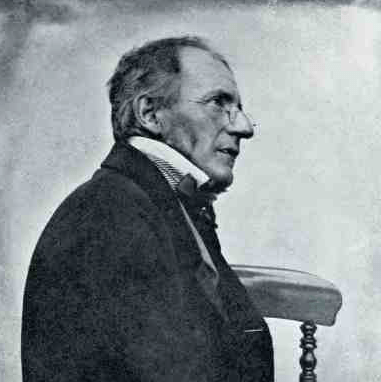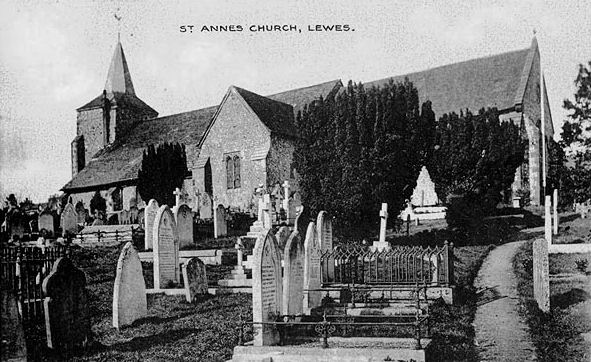In 1835 a young man published a book, the title of which left no question as to its contents. It was called “Sussex: Being an Historical, Topographical and General Description of every Rape, Hundred, River, Town, Borough, Parish, Village, Hamlet, Castle, Monastery and Gentleman’s Seat in that County, alphabetically arranged with the population of each parish , as returned by the last census (1831) with alterations effected by the Reform and Boundary Acts of 1832” Mark Antony Lower was only 21 when he published the book but it was the first of many.
Lower was born in Chiddingly in 1814. He always had an interest in history and heraldry and is credited with painting the Royal coat of arms at his local church, the wonderful 14th century building full of historical interest. One can imagine the young boy being inspired by the beautiful alabaster memorials to the Jefferay family and the funeral hatchments that decorate the church. He later worked at East Hoathly School and at the tender age of 19 established his own school at Alfriston. Whilst in the village he taught himself Latin.

In 1835 he married and moved to Lewes where he ran another school in Lancaster Street and by 1838 he was busy lecturing at his Mechanics Institution in Lewes. The Institution was established by Lower to promote scientific and literary studies amongst the working classes, and was situated at the end of Fisher street on the site of the (old) Police Station. History was his subject and in 1842 he published another book on the origin of English surnames. (Family Nomenclatures, Historical, Etymological and Humorous) The Spectator called the book “curious ingenious and amusing’
Lower was a Fellow of the American Antiquarian Society and a founder member of the British Archaeological Association (1844) He spoke at their first Annual General Meeting at Leicester Square in London on the subject of the newly discovered remains of Gundrada the wife of William de Warenne at Lewes Priory which had been unearthed during the building of the Brighton to Lewes Railway.

Lower and his wife Mercie had five children including a son called ‘William de Warenne Lower’ and a daughter Fanny Gundrada Lower!
By 1845 he was running the North Street Academy in Lewes and I am sure that his thirty pupils got a well rounded education. In August 1845 he hired two carriages to take them all back to Chiddingly for a day of sport. Forever the historian, he split the boys into two teams named the White Roses and the Red Roses to recreate the Wars of the Roses by means of a cricket match!
Prompted by the discoveries at Lewes Priory, which he had been personally involved in, Lower founded the Sussex Archaeological Society in 1846 with his friend James Henry Hurdis the son of the renowned poet from Bishopstone near Seaford. Today the Sussex Archaeological Society are the largest county based historical society in the UK – a fact that would have pleased them both.

Lower was interested in the ancient Cinque Ports of Hastings, Pevensey and Seaford particularly in respect of their heraldry. In 1846 he wrote the ‘Chronicles of Pevensey’ and in 1855 ‘The Memorials of Seaford’. He liked the town, and once wrote ‘The little town of Seaford is remarkable for the salubrity and romantic beauty of its surroundings, the snug comfort of its lodgings and the civility of its tradesmen’ After his first wife died, Lower moved to Seaford where he set up a small school for French children at his home at 7, Pelham Place. He married his second wife, Sarah Scrace at St Leonard’s Church, Seaford in 1870. It was in this year he published ‘A Compendious History of Sussex’ one of the most comprehensive histories of the county ever written. The Scrace family had Danish origins and after their marriage they travelled to Scandinavia. The trip must have been a bus-mans holiday, as the journey prompted him to write ‘Wayside Notes in Scandinavia’
He was fascinated by all things historical and published books on heraldry and English surnames. Mark Antony Lower also studied dialects and in 1860 he was visited in Lewes by Prince Lucien Bonaparte (brother of Napoleon) to discus the subject of the dialects of Europe. In an age before the internet and e-mails, it is remarkable that he had such an international following. He was even a member of the New England Historical Society based in Boston USA.

Lower was also interested in natural history and in April 1869 wrote to the local press about a huge flock of over 15,000 ducks flying east. He spoke to the local ‘governors’ (fishermen) who told him they were flying to Norway.
Lowers second marriage was short lived and after his wife died he moved to Enfield, north London to live with his children where he died on 26th March 1876. His remans were returned to his beloved Sussex and he was buried at St Annes Church in Lewes.

Mark Antony Lower was a stalwart of Sussex history. He enjoyed not only archaeology and antiquities but also the dialect and folk history of the county. He was by no means a dull writer; reviewing one of his books a critic wrote ‘Who says that antiquaries are dry and unapproachable cattle or their books as indigestible as sawdust? – The glimpses he gives of the south coast of England and their traditions, merry tales and anecdotes, the view he gives us of the abandoned iron foundries and the interesting way he treats genealogical lore will make this book a welcome guest wherever it findeth its way’
Today historians have disproved many of Lowers historical theories, however who can doubt his love of all things Sussex and is desire to unearth (sometimes literally) the history of our county?
Thanks Kevin. That was very interesting and showed where the street names/buildings came from. Best regards Vivienne VandenBegin
Sent from my iPhone
>
LikeLike